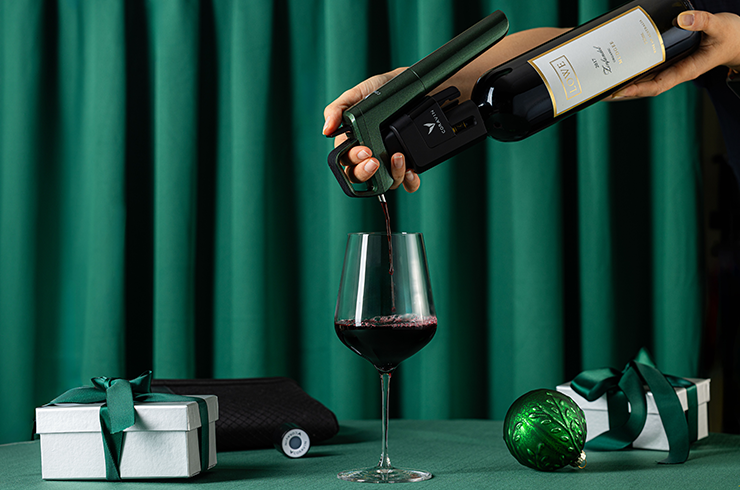Despite living in an era of breathtaking technological and scientific advancement, drinkers often face a dilemma when opening a bottle of wine. For all the sweat and tears of the vigneron, there is no foolproof closure to guarantee the wine’s preservation.
In 1969 we put men on the moon, so why are wine stoppers an ongoing concern today?
Well, some perform better than others, although not every type is included in this summary. There are still many unknown and unmeasurable variables. For example, no one has unlocked the key behind the how and why of wine ageing. In an attempt to unravel some of the science and untruths, what’s been surprising is the paucity of current data, information and research. Even a comparison in percentage terms of closures used in the premium end of the market proved futile. Vested interests perhaps? One thing is certain: no infallible closure exists, but at least there’s choice. Let’s start with cork as it’s been around the longest.

People are accustomed to [cork] and tradition is often cited as a reason to continue using it.
Cork
Plenty of the world’s wine folk love cork. Its producers once enjoyed a monopoly because for more than 400 years, cork was the only wine stopper. People are accustomed to it and tradition is often cited as a reason to continue using it. The challenge to cork’s reign has been relatively recent.Cork is the bark of one of the most extraordinary trees, Quercus suber. It’s an amazing natural product, environmentally friendly and recyclable. The problem is what lurks in cork’s lenticels or pores. In 1982, a research paper identified the major fault, which drinkers had been smelling and tasting for years – 2,4,6-Trichloroanisole, known as TCA, or cork taint. It’s a musty, wet-cardboard character that renders a wine undrinkable, if harmless. It’s not the only compound causing mustiness and cork is not the only carrier. The main culprit is chlorine, once used in the cleaning and bleaching process.
Although slow in addressing the problem, in the past decade companies such as Portugal’s Amorim, the world’s largest cork producer, started to tackle TCA and the other serious fault, random oxidation, through better and more thorough testing and cleaning practices. There is still no means of eliminating TCA completely, even if the threshold is not detectable. TCA and oxidation doesn’t discriminate either – the most expensive corks at around $2 each are as susceptible as the cheapest.
When cork does its job properly, it has an ability to seal a wine for decades with no leakage. The world’s greatest old wines are under cork; there are no comparisons, and that’s why it endures. However, the main issue with cork is variability. Every bottle will be different, whereas screwcap appears to take variability out of the equation.
Screwcap
Most Australian and New Zealand wine is under screwcap, and Stelvin is the leading supplier. The rise was spearheaded in 2000 when a group of Clare Valley riesling producers launched their wines under screwcap, forever changing the drinking landscape. Plus, it negates the need for a corkscrew.As a closure for fine wine, especially reds with long-term ageing potential, the jury’s still out. This is partly because the integrity of the available waddings, sitting between the glass and aluminium seal, is unknown. Also, a residual effect still exists – screwcaps are perceived as being for cheap wines, especially in export markets such as China.
Jeffrey Grosset, one of those Clare Valley producers, has no emotional attachment to closures, but wants his customers to be satisfied when they open a bottle. Apart from no cork-derived TCA, he says consistency and freshness are features.
Kooyong and Port Philip Estate winemaker Sandro Mosele has gone through the transition of using cork to Diam, which he says is a good closure, to screwcap. Why change?
“Now with the technology available, I can’t say Diam is better than screwcap or that screwcap is the definitive answer. While screwcaps do work well on our wines, there’s also the simple equation of cost: using screwcap has offered a substantial saving and I couldn’t ignore that,” says Sandro.
There are environmental concerns with aluminum production, however, including the extraction in its raw state as bauxite and the high energy needed to produce it.
Crown seal
Crown seal is enjoying a resurgence, thanks to the popularity of moscato and prosecco. Except for beer, it has been a behind-the-scenes closure, used during tirage in sparkling wine production both in Australia and Europe, especially Champagne.Domaine Chandon’s chief winemaker, Dan Buckle, says the cap is reliable, excellent in withstanding the pressure in a sparkling wine bottle, and neutral so there is no risk of taint. Plus, the wine can be mechanically disgorged. The problem is they don’t look stylish. While Chandon once sold sparkling under crown seal, now it uses Diam cork and there’s no going back. “There’s an ever-so-subtle flavour (of cork) and gentle oxidation it contributes to the wine,” says Dan, “and the whole cultural aspect of a piece of cork popping has an undeniable attraction. We don’t need to go back now that we have a technical solution to achieve that pop: Diam.”
Diam
What is Diam? It looks like a cork and is made from cork, but the difference is in the complex process used to reconstitute it. A super-critical CO2 procedure called Diamant, which the Diam Bouchage company patented, removes TCA and other compounds, to a degree. The cork is ground to 2mm particles, undergoes an extraction process, and is then moulded back into a cork-shape held together by a food-grade binding agent. Some wine industry pundits claim they can smell the glue-like binding agent, but nothing has been proven.Diam makes different corks with three levels of permeability, plus the Mytik for sparkling and Altop for spirits – and it guarantees every cork. Through Diamant, the company has lowered the rate of releasable TCA to an undetectable level.
According to its importer, Dan Simmons, general manager of Vinocor, Diam produced 1.3 billion closures last year, with the Australasian market representing 3.5 per cent. “We have about 300 direct customers in Australia and 100 in New Zealand using Diam for still, sparkling and fortified wine. There are many more customers who are supplied via various contract bottlers,” he says. The market is growing, with production expected to reach 2 billion when its third processing plant is built.
Glass
Glass became a viable option with the launch of Vinolok in 2003, now owned by Czech glass company Preciosa. The striking design comprises an O-ring made from an ethylene vinyl acetate copolymer resin, which is also used in dairy and meat packaging, encased in a protective aluminium sheath. It’s popular in Austria and Germany, and Henschke was the first Australian producer to adopt it.Following initial trials in 2004 assessing how reds would develop, 10 years of data has convinced Stephen Henschke he did the right thing. There is no bottle variation, no need for a corkscrew and Stephen likens Vinolok to a magnum – it facilitates a slower rate of ageing. Importantly, the flagship Hill of Grace, plus Mount Edelstone and the cabernet blend Cyril Henschke are under Vinolok, but only for export markets – due to the acceptance of screwcap in Australia, the aforementioned wines are sold under that closure here.
Some have questioned the durability of the O-ring and whether there will be any chemical reaction between it and the wine, although there’s no evidence to date. The main barrier is the cost. Vinolok is relatively expensive – in Australia well over $2.
Finally, there are experiments and prototypes utilising glass on glass. As they are in the developmental stages, producers are reticent to discuss details. However, it proves the search for better closures continues.



